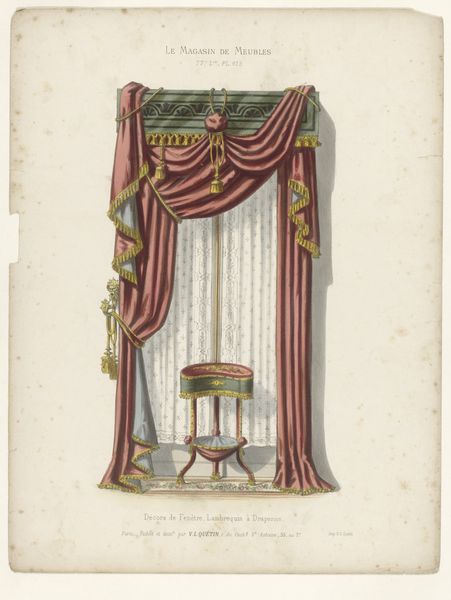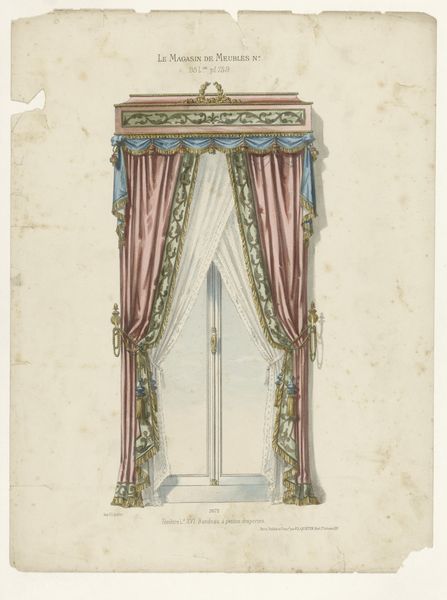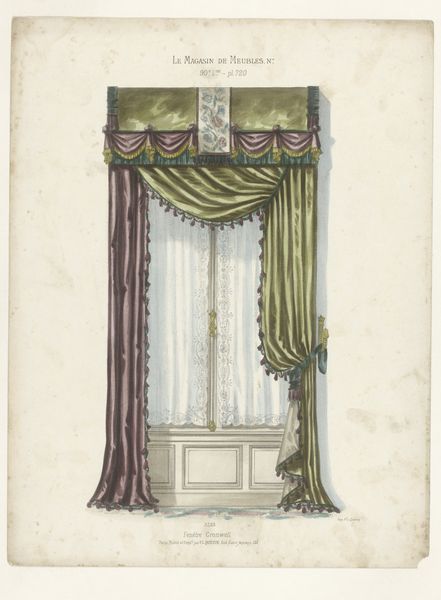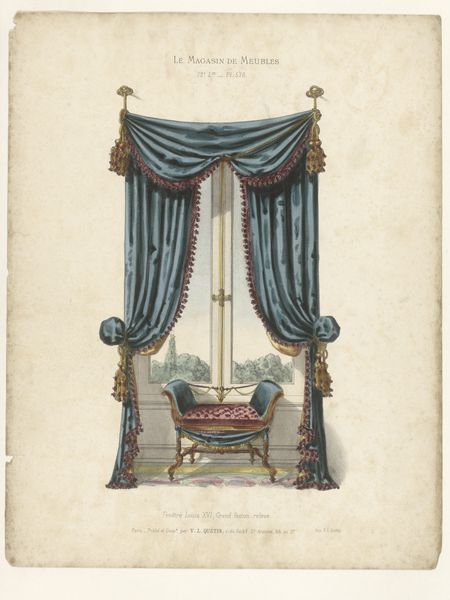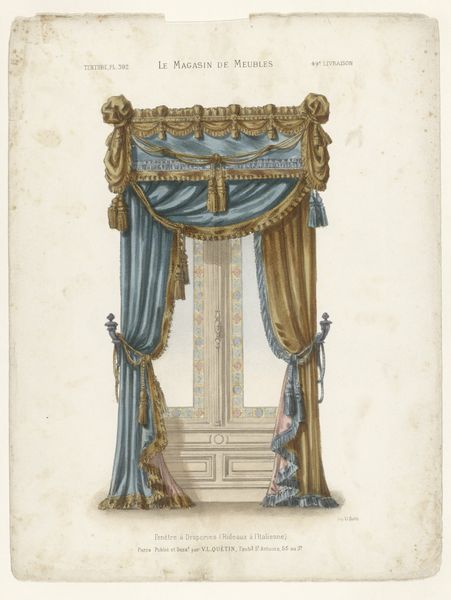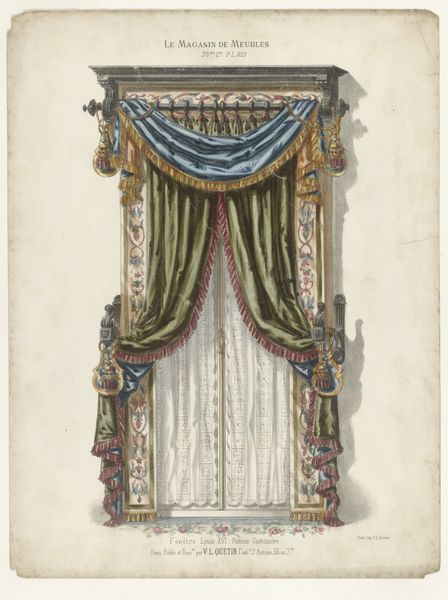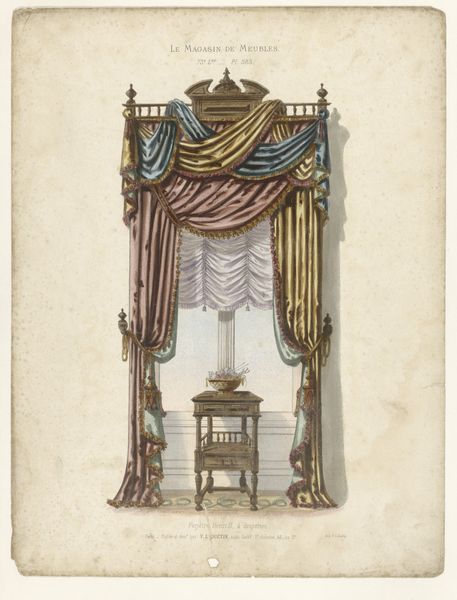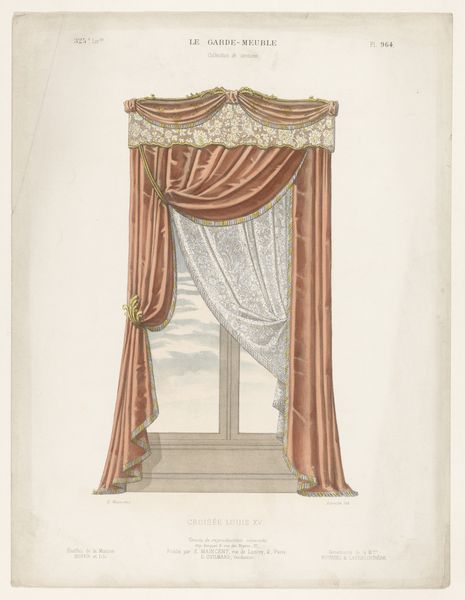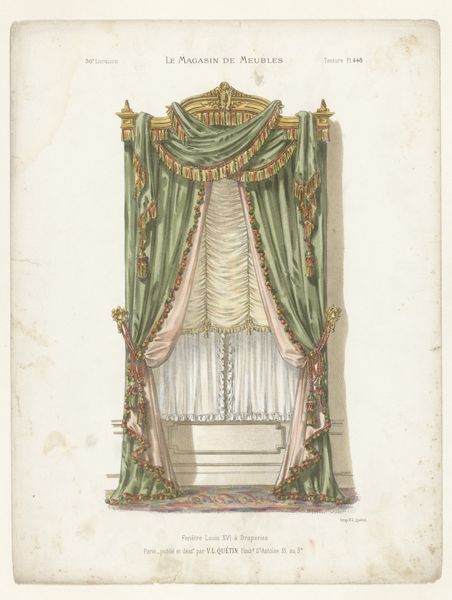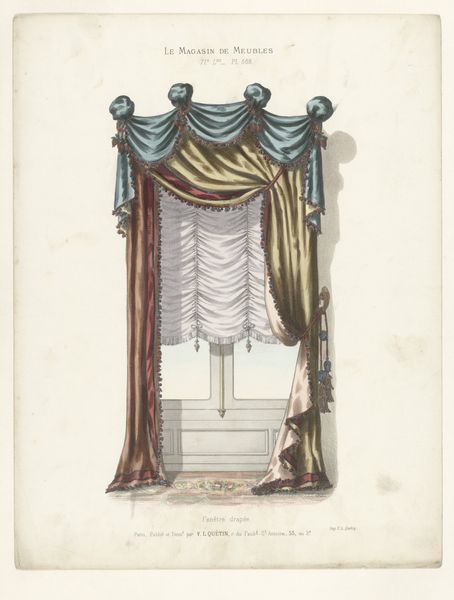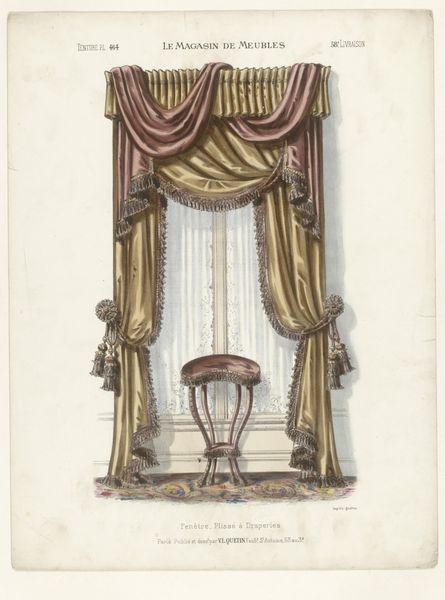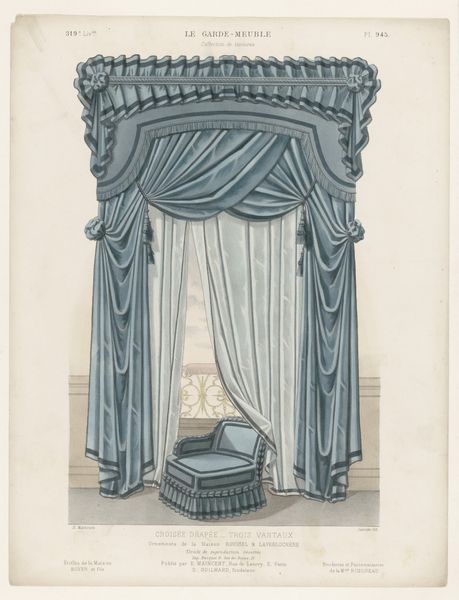
drawing, graphic-art, print
#
drawing
#
graphic-art
# print
#
coloured pencil
#
19th century
#
line
#
history-painting
#
decorative-art
Dimensions: height 360 mm, width 275 mm
Copyright: Rijks Museum: Open Domain
Curator: It's so opulent, almost theatrical, isn't it? Editor: It absolutely is! We’re looking at a print titled "Venster met gordijnen," dating from after 1878. It depicts, as the title suggests, a window treatment design, showcasing luxurious draped curtains. Curator: I immediately see so much signifying class, power, and perhaps even a hint of societal restraint given the... rigidity of the design. Windows, symbolically, are always about looking outwards, engaging with the world. What happens when they're this heavily adorned? Editor: Well, that's interesting. Windows are indeed apertures, connecting us to what's beyond. In this case, these Louis XIII style curtains remind me of the desire to establish one's family with respect and elegance while recalling an idealized past. The heavy draping is definitely communicating a certain sense of social separation, possibly an emphasis on the separation of the noble class and common life at that time. Curator: Exactly! And what about the colors themselves? The pairing of this muted, dusty rose with the deep, almost melancholic green…it's quite deliberate, wouldn’t you agree? Editor: The artist, working in this 19th century decorative style, is very carefully using the accepted semiotics of the period. Color and pattern choices were meticulously considered for the impact that they'd have upon people, both emotionally and in the context of its symbolism. Take into account, interior design was a highly policed business back then with specialized artisans with secret recipes that were transferred down the family lineage. This specific tone could signify growth or transformation that were especially important for a generation rebuilding its heritage following various revolutions. Curator: Do you believe that that artistic aim may influence, in some way, the public's interaction with that same imagery across time? Editor: No question about it. The colors and symbols have remained meaningful, even though their meanings may have changed as it became increasingly common during that era to own a piece of furniture. Its resonance still reverberates today as a representation of social status and history that informs, educates, and entertains. Curator: A wonderfully thorough look—thank you. Editor: My pleasure. Looking closer into the image certainly reveals volumes of historical truths about interior decorating in Europe!
Comments
No comments
Be the first to comment and join the conversation on the ultimate creative platform.
